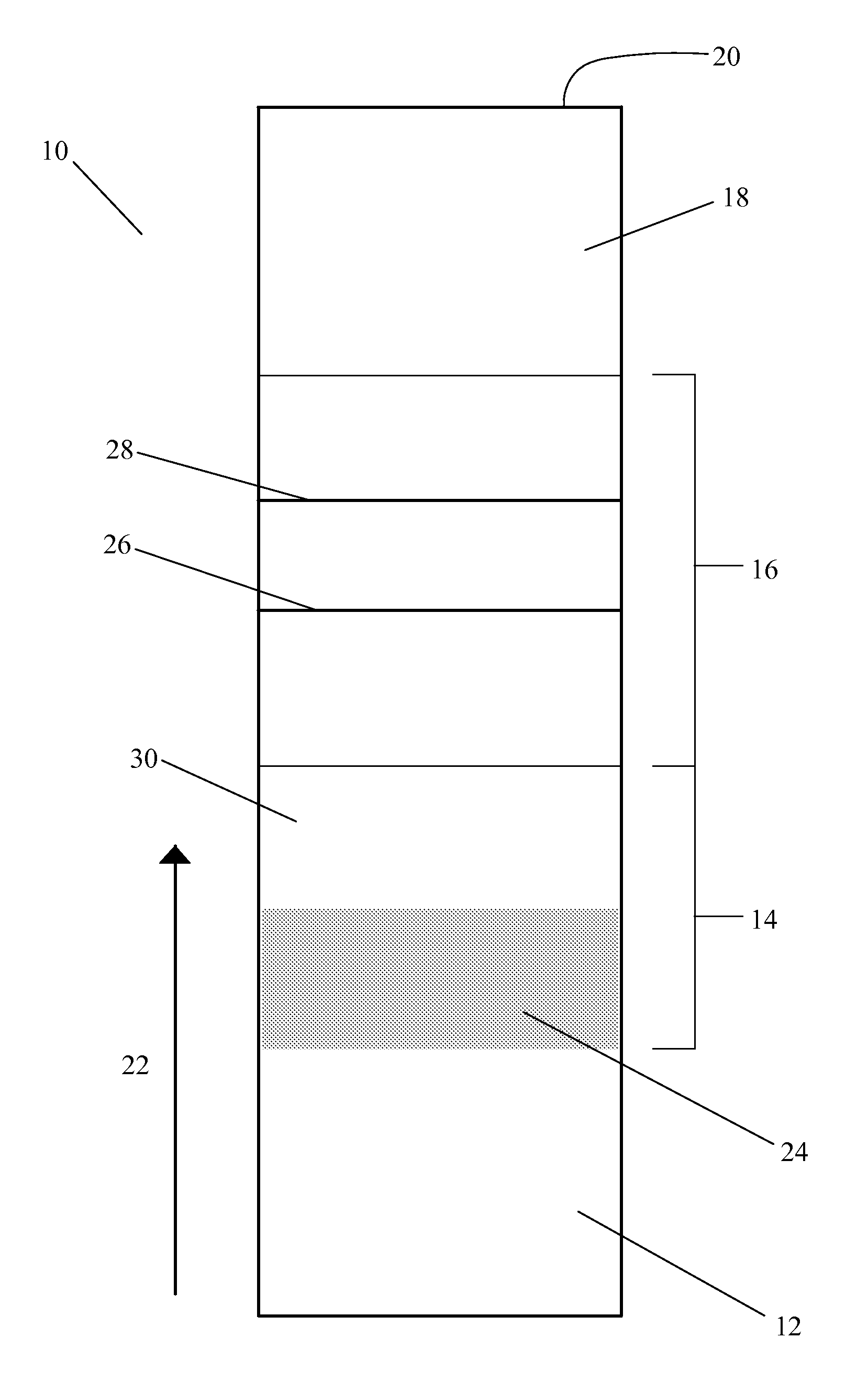Lateral flow nucleic acid detector
a nucleic acid detection and lateral flow technology, applied in the field of nucleic acid detection, can solve the problems of non-specific binding, inherent limitations, and insufficient specificity of ligand-receptor interaction for reliable assay
- Summary
- Abstract
- Description
- Claims
- Application Information
AI Technical Summary
Problems solved by technology
Method used
Image
Examples
first embodiment
[0041]FIG. 2 shows a positively-detectable complex of a target nucleic acid in the present invention. In this embodiment, the target nucleic acid 40 in the sample is a single-stranded nucleic acid sequence. The first complex 42 includes at least one first nucleic acid sequence 44 complementary to an inner part of the sequence of the target nucleic acid 40. The first nucleic acid sequence 44 is associated with a label 46. The second complex includes at least one second nucleic acid sequence 48 complementary to an outer part of the sequence of the target nucleic acid 40. The use of two sequences complementary to different parts of the target nucleic acid in the lateral flow assay improves the specificity of the assay.
[0042]In some embodiments, the first nucleic acid sequence 44 is preferably an inner PCR primer and the second nucleic acid sequence 48 is preferably an outer PCR primer. Alternatively, the first nucleic acid sequence 44 is an outer PCT primer and the second nucleic acid ...
second embodiment
[0043]FIGS. 3 through 9 show a positively-detectable complex of a target nucleic acid in the present invention. As shown in FIG. 3, in this embodiment, the target nucleic acid 50 in the sample is a double-stranded nucleic acid. The target nucleic acid 50 in the sample is preferably denatured in situ, preferably by a denaturant or lysis agent such as DNAzole Direct, formamide, or urea, to open up at least a portion of the double strand to a first strand 52 and a second strand 54. This may be done by adding the denaturant or lysis agent to the sample solution prior to application of the sample to the test strip or the denaturant or lysis agent may be pre-loaded to a zone of the test strip, as discussed earlier. Alternatively, denaturing of the nucleic acid may be achieved by adjusting or controlling the tonicity, the temperature, or the pH of the assay within the spirit of the present invention. A partial opening is preferred for detection in the lateral flow assay, although an assay ...
PUM
| Property | Measurement | Unit |
|---|---|---|
| time | aaaaa | aaaaa |
| fluorescent | aaaaa | aaaaa |
| fluorescence | aaaaa | aaaaa |
Abstract
Description
Claims
Application Information
 Login to View More
Login to View More - R&D
- Intellectual Property
- Life Sciences
- Materials
- Tech Scout
- Unparalleled Data Quality
- Higher Quality Content
- 60% Fewer Hallucinations
Browse by: Latest US Patents, China's latest patents, Technical Efficacy Thesaurus, Application Domain, Technology Topic, Popular Technical Reports.
© 2025 PatSnap. All rights reserved.Legal|Privacy policy|Modern Slavery Act Transparency Statement|Sitemap|About US| Contact US: help@patsnap.com



